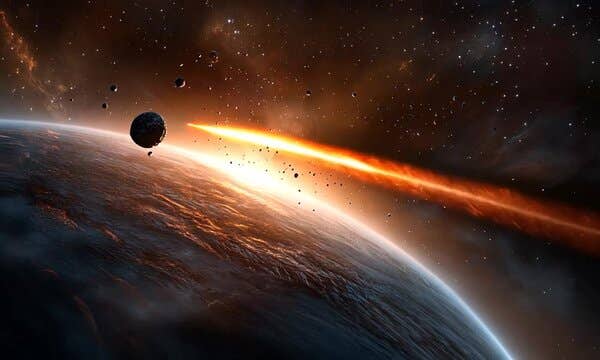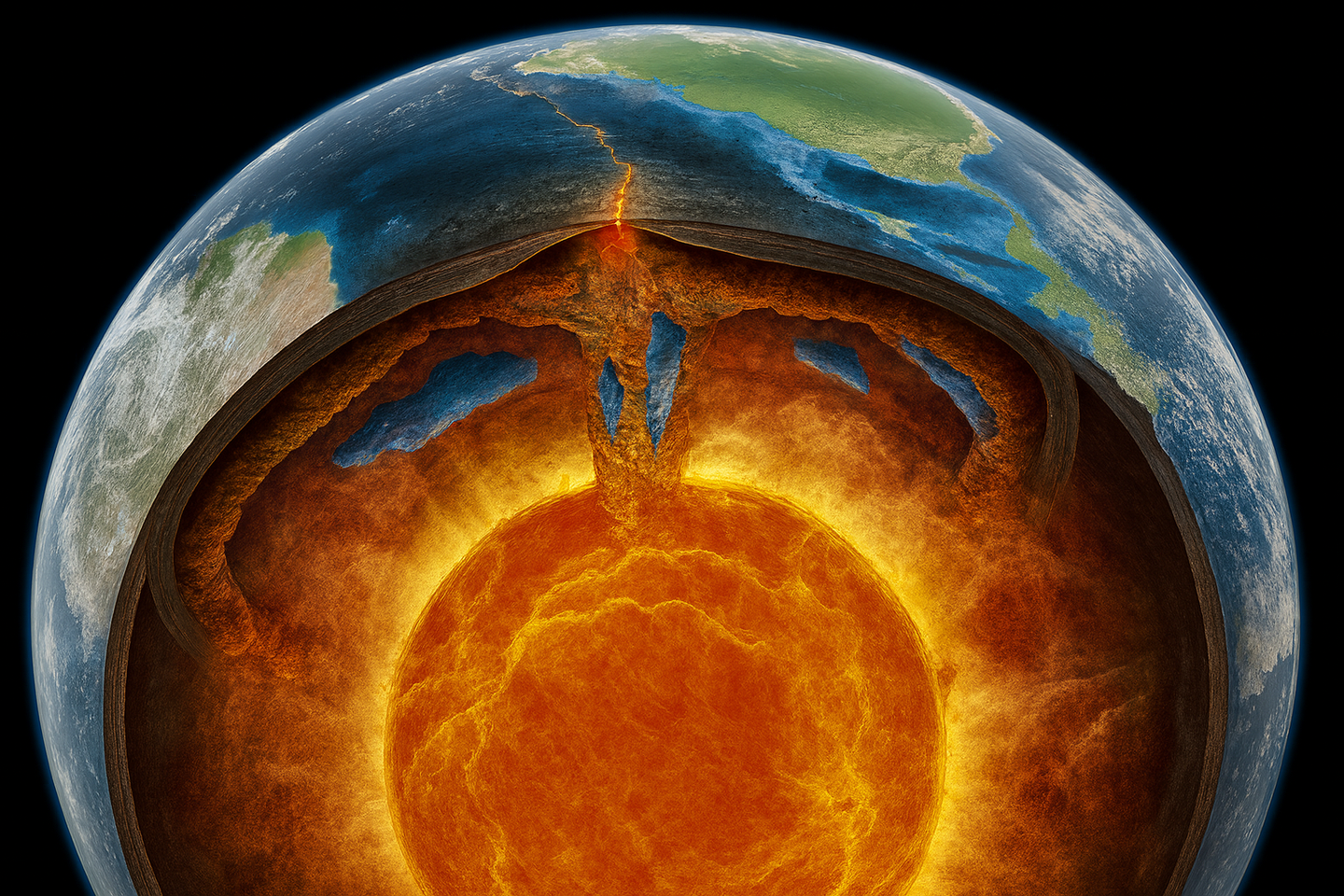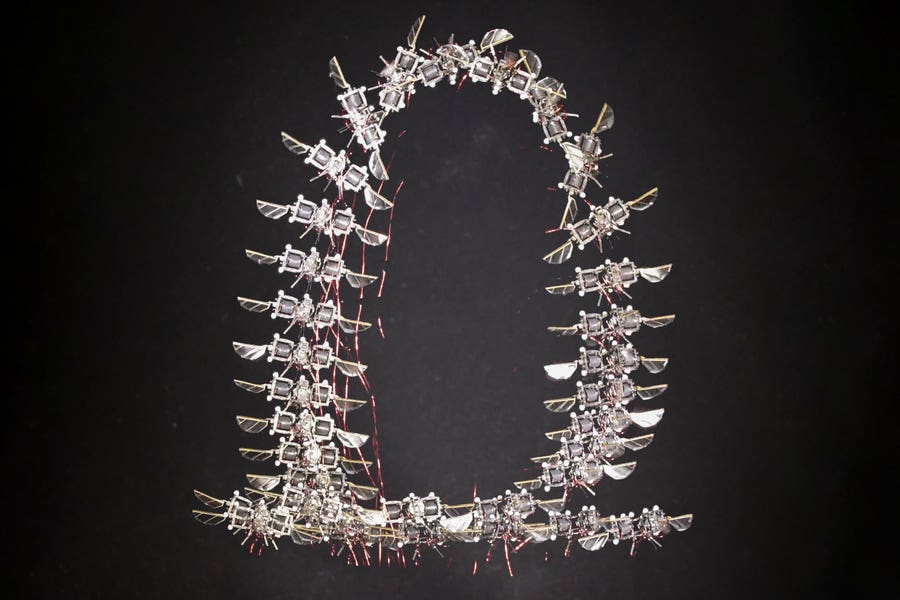The Sun’s secret role in shaping comet paths and meteor showers
New research shows how the Sun’s motion causes comets and meteor showers to shift and spread across time.

New research shows how the Sun’s motion causes comets and meteor showers to shift and spread across time. (CREDIT: CC BY-SA 4.0)
The way comets behave in space may seem random, but new research suggests there’s more order behind the chaos than once believed. A recent study led by researchers at the SETI Institute reveals that many of the twists and turns seen in long-period comets and their meteoroid trails come from the Sun’s own motion—not just the pull of planets.
This surprising insight changes how scientists understand the origin and shape of meteor showers that hit Earth. “Contrary to popular conception, everything in the solar system does not orbit the Sun,” said Stuart Pilorz, a lead scientist on the study. Instead, all the planets—and even the Sun—circle around a shared center of mass, called the solar system barycenter.
Think of the barycenter as the balancing point of the solar system. Even though the Sun is huge, it doesn’t sit still at the center. It wobbles around the barycenter, tugged gently by the orbits of giant planets like Jupiter and Saturn. This wobble, though small, plays a major role in shaping the paths of comets.
Most solar system models place the Sun at the center to make the math easier. But for comets with long, looping orbits—those that take more than 200 years to come back—the wobble of the Sun cannot be ignored.
Long-period comets spend most of their time far away, circling slowly at the edge of the solar system. But every few hundred years, they dive inward. As they move closer to the Sun, the center of gravity that governs their motion changes—from the solar system’s barycenter to the Sun itself.
This shift doesn’t just change their path. It gives them a gravitational “kick.”
That kick is like bouncing a ball off a moving train. If the train is moving, the ball bounces differently than if the train were sitting still. “But the train has to be moving for it to work,” explained Pilorz. Similarly, if you imagine the Sun as fixed, these changes don’t make sense. Only when you account for the Sun’s movement do the puzzle pieces start to fit.
Related Stories
Inside Jupiter’s orbit, the meteoroid’s motion switches to follow the Sun directly. Then, when it swings back out, it returns to following the barycenter. This back-and-forth switch shifts the direction and tilt of the meteoroid’s orbit. These shifts cause the trail of debris left behind by comets to slowly spread apart.
When a comet gets close to the Sun, it heats up and releases tiny particles—meteoroids. These follow the comet’s general path, forming narrow streams. But not every meteoroid moves the same way. Some take shorter routes, others longer. Over time, this difference stretches and twists the stream, like pulling apart strands of a spider web.
Meteor astronomer Peter Jenniskens, also of the SETI Institute, noticed something striking back in 1995. The streams of meteoroids were weaving in and out of Earth’s orbit in sync with the Sun’s wobble. This wobble mostly mirrors Jupiter’s and Saturn’s long, slow orbits, which create a repeating pattern about every 60 years.
That year, Jenniskens traveled to Spain to observe a rare shower. “The whole shower lasted only 40 minutes, but there was a bright meteor every minute at the peak,” he recalled. “Stars fall at midnight,” one witness said.
The research team wanted to understand why these streams of particles drift and spread out over time. Earlier models showed that meteoroid trails do wander, but no one had figured out the root cause.
This new study shows that as each meteoroid passes close to the Sun, it gets a tiny gravitational push or pull. Since the Sun isn’t always in the same spot in its wobble, each meteoroid gets a slightly different kick. This difference adds up, and the once-thin stream starts to scatter.
Over thousands of years, this slow dispersion reveals the stream’s age. Jenniskens and Pilorz used this method to calculate the ages of over 200 meteoroid streams. These were featured in Jenniskens’ book, Atlas of Earth’s Meteor Showers, which was recognized as a 2025 PROSE Book Award finalist.
Meteoroid streams from long-period comets don’t stay perfect ribbons forever. They gradually lose their shape, due in part to the Sun’s changing position during each encounter. Though other forces like solar radiation and planetary gravity do play a role, the Sun’s movement is a key driver in this long, slow dance.
The orbits of these streams show a random walk over time, kind of like smoke slowly spreading in the wind. The randomness comes from the Sun’s changing position, while a steadier shift, called precession, is caused by the gravity of planets—mostly Jupiter and Saturn.
That said, close flybys with planets can also shake things up. But even then, the Sun’s own motion is often the more dominant factor when it comes to long-term changes in comet streams.
To dig deeper, the researchers ran detailed computer models. They simulated the paths of comets and their debris for tens of thousands of years. These simulations confirmed what was seen in real meteor showers: the spreading patterns match the Sun’s motion around the barycenter.
One simulation compared two comets—one with a 250-year orbit and one with a 4,000-year orbit. In both cases, the comets spent most of their time far beyond the big planets. They only became visible—and active—during brief visits to the inner solar system.
By following how the orbital angle, tilt, and closest approach shifted, the team could see clear patterns. These orbital “fingerprints” allowed them to estimate when each stream was first formed. In many cases, that meant tracking streams that began thousands of years ago.
Previous studies noticed that comets switch between following the barycenter and the Sun, but the impact of this change wasn’t fully understood. Now, it’s clear: the moment when the Sun grabs control and then lets go again leads to real changes in the orbit’s shape and tilt.
This capture and release doesn’t just bend the path. It adds or subtracts energy from the meteoroid, depending on the Sun’s location and speed at the time. Over many orbits, this turns a clean path into a hazy stream.
The study also found that the spreading of the meteoroid stream grows based on how many times the comet has orbited, not just how much time has passed. And the farther a comet gets from the Sun before turning back—its “perihelion distance”—the slower the spread.
Jenniskens and Pilorz also noted that this behavior matches a kind of controlled randomness. Like rolling a bunch of dice where the odds change slightly each time, the comet streams drift in a way that’s hard to predict but not fully chaotic. In fact, the researchers found that the spread in their angles follows a well-known distribution used in physics called the Maxwellian distribution.
Over 500 meteor showers have been recorded on Earth, and more than half can be traced back to long-period comets. These showers don’t just light up the night sky—they also pose real risks to spacecraft. Small pieces of debris from these comets can hit satellites or astronauts, traveling at blazing speeds.
Only comets with orbits shorter than about 4,000 years seem to create streams dense enough for us to detect. But even among those, each stream’s visibility depends on timing. Because the Sun’s wobble changes slowly, some showers only appear once every few decades.
This study, published in the journal, Icarus, helps explain why. It shows that the spreading of each stream is shaped by the state of the Sun during each close pass. And with the right tools, scientists can now use that data to estimate how long ago a meteoroid stream began, and maybe even find the parent comet that launched it.
Note: The article above provided above by The Brighter Side of News.
Like these kind of feel good stories? Get The Brighter Side of News' newsletter.



